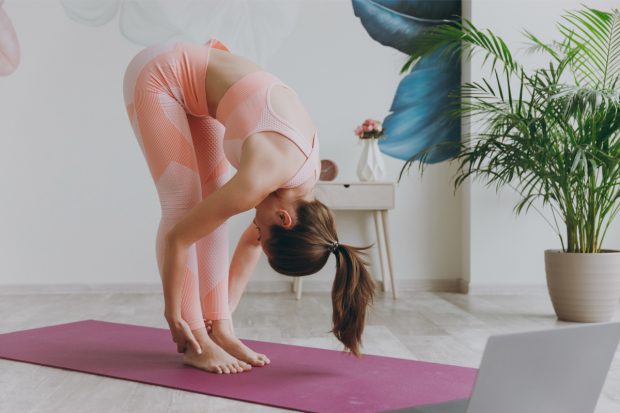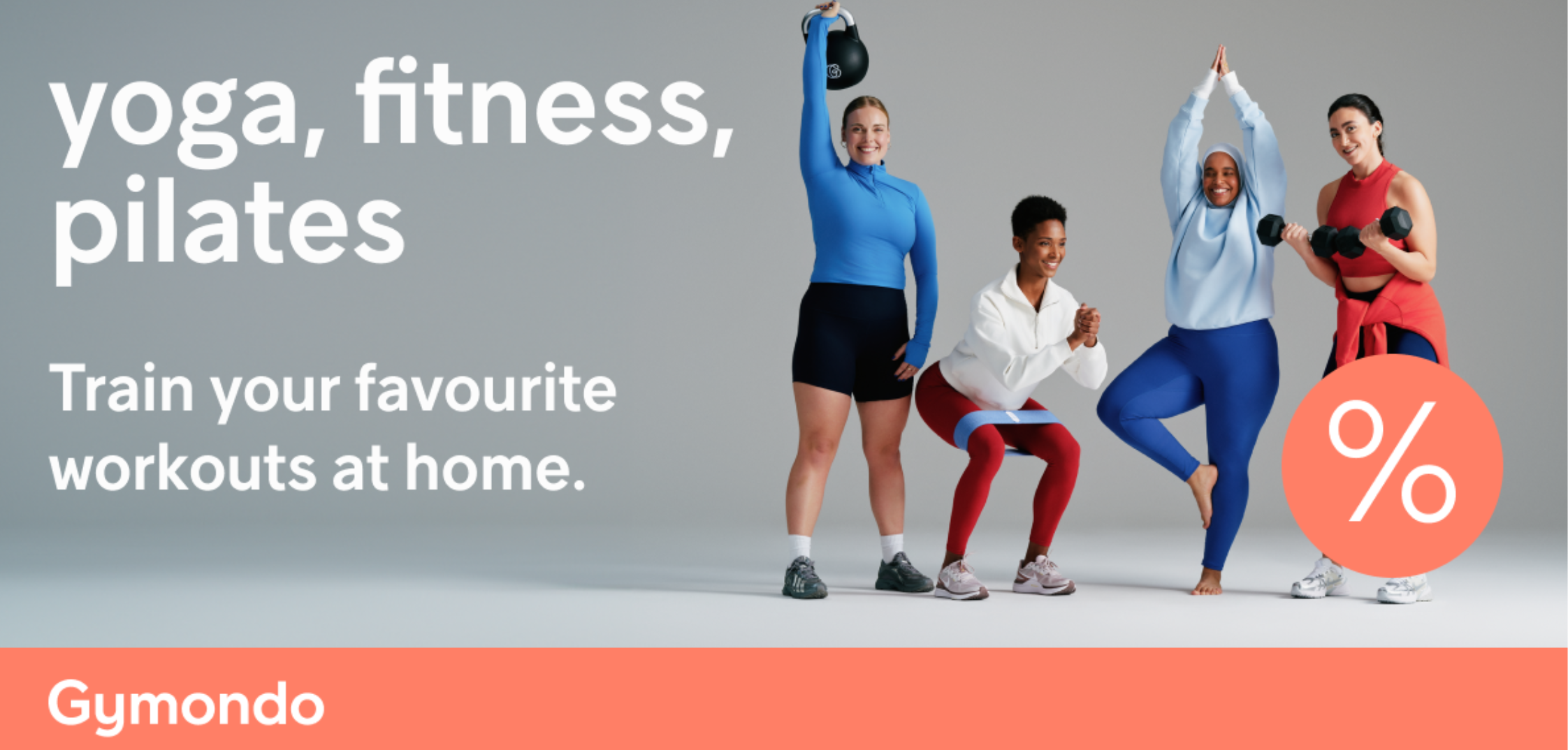Contents

Are you new to fitness? Or maybe you’re starting back up after a long break. Wherever you’re at in your journey, it’s hard to know what to expect. You’re probably wondering how often you should train, how long your workouts should be and how to stay motivated for the long-run.
We’re here to answer all of your questions. Here are the top 10 frequently asked fitness questions every beginner asks—answered!
#1: How Often Should I Work Out?
How often you should train is totally dependent on your goals, lifestyle, schedule and fitness level.
Beginners should start with 2 to 3 training sessions per week. This will help you build up your fitness level while giving your body proper rest between training sessions.
Once your workouts start to feel easier, consider adding on more training days. Shoot for 4 to 5 training days per week when you feel ready.
Make sure to include active recovery days in between your harder workout sessions. Activities like walking, light jogging or yoga can help you recover quicker while still keeping you active throughout the week.
#2: How Long Should My Workouts Be?
It’s about the quality of your workout, not the quantity (of minutes). How long you train is totally dependent on your lifestyle and schedule. A 20-minute workout can be just as effective as an hour-long sweat sesh depending on your training intensity.
According to the Center for Disease Control and Prevention (CDC), adults should get at least 150 minutes of exercise per week. That could be 30 minutes a day, 5 days a week, but you can schedule your minutes any way you wish.
No matter if you’re new to fitness, have taken a long break or are looking to step up your routine, our huge variety of Gymondo training programs will help you build consistency in your training routine. Consistency is the number one goal when trying to make fitness a long-term commitment.
Just remember: Doing something is better than doing nothing. Within the Gymondo app, you’ll find workouts ranging from 5 to 40 minutes so you can easily fit fitness into your lifestyle. There’s literally something for everyone.
#3: Do I Need to Warm-Up?

Absolutely! We get it—it’s so tempting to skip the warm-up and jump straight in, but it’s a good way to get injured. A solid warm-up prepares your body for more intense work by raising your body temperature and increasing blood flow to your working muscles.
Five minutes is all you need to get in some dynamic stretching to prepare your muscles for what lies ahead. Within the Gymondo app, you’ll find optional 5-minute warm-ups before every workout.
#4: Is Strength Training or Cardio Better?
We recommend a combination of strength training and cardio to ensure your training routine is balanced and to reduce boredom.
Strength training burns calories just like any other form of exercise. Since muscle has a higher metabolic rate than fat, having more of it increases calorie burn. Additionally, strength training improves bone mineral density, increases muscle mass and promotes better posture.
Cardio increases your heart rate to the fat-burning zone and keeps it elevated continuously for the duration of the workout to enhance cardiovascular health, lung function and energy levels.
Both strength training and cardio help you to burn more calories each day and reach a caloric deficit to lose body fat. If you structure your strength training into a circuit-style workout, you’ll keep your heart rate elevated to burn even more calories.
So, if your goal is to lose weight, your best bet is to do both.
Related: 3 Reasons to Add Strength Training to Your Workout Routine
#5: How Do I Stay Motivated to Continue Working Out?

You were super motivated when you started your fitness journey but somewhere along the way, those feelings faded. This is perfectly normal—you’re human, after all!
There will be days where working out is the last thing you want to do. And there will be other days where you’re raring to go.
Here are some tips that will keep you motivated to keep moving:
- Set goals for yourself. Anything from completing a challenge to doing a specific number of workouts per week will help hold yourself accountable.
- Plan your workouts in advance. This will help you establish a regular workout routine and make exercise a habit.
- Keep reminding yourself of how you feel after a workout. From more energy to increased happiness, the benefits of exercise are endless.
- Find a workout partner to hold you accountable and collectively share your fitness milestones.
- Choose training styles you actually enjoy. There’s no reason to continue running on the treadmill if you hate it. The choices are endless, so choose wisely.
Related: 5 Tips to Stay Motivated to Work Out From Home
#6: What Time of Day Should I Work Out?
There’s much debate when it comes to the best time of day to work out. And to be honest, there’s no right or wrong answer. After all, exercise isn’t about how many calories you burn or what time of day you train—it’s more about how you feel when you’re doing it and how it can fit into your daily schedule. So, the best time to work out is whenever you can.
#7: What’s the Best Type of Workout for Weight Loss?

Here’s the thing—working out isn’t enough on its own to make weight loss happen. There are so many other factors to consider—age, genetics, health history, nutrition, etc. The number one way to lose weight is to adopt healthy habits and make exercising a long-term priority.
To get a bit nerdy, you must create a calorie deficit to lose weight. This means you must consume fewer calories than you burn. The bottom line: Weight loss is complicated and extremely personal. What works for one person may not work for another.
Here are a few tips that may help you on your weight loss journey:
- Your food choices are even more important than your workout choices.
- Exercise should become a part of your regular routine.
- Give it your all in every workout you do.
- Find workouts you actually like so you’ll be more likely to stick with them.
The best workouts for weight loss include HIIT, strength training, running, CrossFit, interval training, boot camps, boxing, jumping rope and Tabata. These workouts burn more calories in less time than other forms of exercise. For optimal results, go as hard as you can!
Related: Top 10 Exercises for Weight Loss
#8: What’s the Best Way to Help Sore Muscles?
If you’re new to fitness or are just starting back up after a long break, you’re probably going to feel very sore. And it won’t be during or right after your workout. Nope, it’s going to hit the very next day—a type of pain coined Delayed Onset Muscle Soreness (DOMS).
DOMS is caused by microscopic tears in the muscle. But don’t worry—it’s perfectly normal and is most common when you try something new.
If you find yourself feeling sore after a workout, take an active recovery day to get the blood flowing. Do some walking, light jogging or a low-impact Pilates or yoga class.
To recover more quickly after hard sweat seshes, reduce the intensity of your workout the following day. This will allow your body to fully recover before you get back at it.
Related: Top 5 Active Recovery Exercises
#9: Are Rest Days Important?
Rest days are super important because they allow your body the chance to recover, repair and rebuild.
A good rule of thumb is to alternate between strength training and cardio workouts with rest days interspersed in between.
For example, you could strength train on Mondays and Thursdays and do cardio workouts on Tuesdays and Fridays with rest days on Wednesdays and over the weekend.
Even as you become fitter, rest is still crucial since you only build strength during recovery periods, not during the workout. And never work out when you’re sick or injured. After all, your goals are consistency and longevity.
#10: What Should I Do If the Workouts Are Too Hard for Me?
When you’re just getting started, you may struggle to finish a workout or you may need to take extended breaks before moving on to the next exercise. Just stick with it. In a few weeks, you’ll slowly start to increase your strength and endurance. Before you know it, you’ll be crushing your sweat seshes!
Just remember to go at your own pace. Pushing yourself too hard in the beginning can lead to injury or burnout.
If the workouts seem too hard for you, here are some tips to reduce the difficulty:
- Modify exercises when needed. For example, if squat jumps are too challenging for you, replace them with air squats. Or, if you’re unable to complete a standard push-up, do the exercise on your knees or against the wall.
- No one says you can’t stop the workout video and take longer breaks between sets. Do this until you build up more stamina.
- Reduce the number of sets and reps or decrease the amount of weight you’re using. Once it starts feeling easier, add more weight.
Whether you’re new to fitness or simply want to step up your routine, take the studio home with classes made with you in mind. Start your 7-day free trial today.






very nice and deep information provided, it will really helpful for begginers.